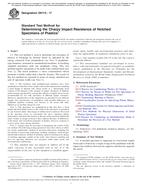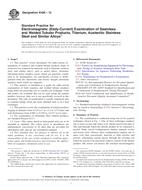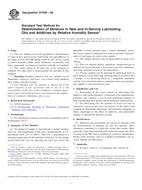1.1 This guide covers the implementation of the Chromatographic Data Protocol in analytical software applications. Implementation of this protocol requires:
1.1.1 Specification E1947, which contains the full set of data definitions. The chromatographic data protocol is not based upon any specific implementation; it is designed to be independent of any particular implementation, so that implementations can change as technology evolves. The protocol is implemented in stages, to speed its acceptance through actual use.
1.1.2 Specification E1947 contains a full description of the contents of the data communications protocol, including the analytical information categories with data elements and their attributes for most aspects of chromatographic tests.
1.2 The Analytical Information Categories are a practical convenience for breaking down the standardization process into smaller, more manageable pieces. It is easier for developers to build consensus and produce working systems based on smaller information sets, without the burden and complexity of the hundreds of data elements contained in all the categories. The categories also assist vendors and end users in using the guide in their computing environments.
1.3 The NetCDF Data Interchange System is the container used to communicate data between applications in a way that is independent of both computer architectures and end-user applications. In essence, it is a special type of application designed for data interchange.
1.4 The Common Data Language (CDL) Template for Chromatography is a language specification of the chromatography dataset being interchanged. With the use of the NetCDF utilities, this human-readable template can be used to generate an equivalent binary file and the software subroutine calls needed for input and output of data in analytical applications.
Product Details
- Published:
- 10/01/2009
- Number of Pages:
- 7
- File Size:
- 1 file , 190 KB


